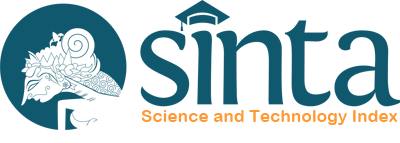THE EFFECT OF BULLYING CONSUMPTION ON BULLYING BEHAVIOR AND EXPERIENCE OF HIGH SCHOOL STUDENTS: A CASE STUDY IN SMK 49 NORTH.JAKARTA
Abstract
Schools are very influential in educating the younger generations. Not only creating a good generation, it turns out that schools can also be a place for violence, whether by teachers against students, students against teachers, or students against other students. Acts of violence committed by students in schools are increasingly heard and very worrying. This is evidence of the loss of human values and moral values. One that often occurs in the school environment today is Bullying. The word Bullying comes from English, namely from the word bull which means bull. In Indonesian, etymologically the word bully means to intimidate, while in terminology according to the definition of bullying according to Rigby (1994) is "a desire to hurt. This desire is shown in action, causing someone to suffer. This action is carried out directly by a person or group that is stronger, irresponsible, usually repeated, and carried out with a feeling of pleasure. "According to Sejiwa (2008: 2) states that Bullying is a situation where there is abuse of power or authority carried out by a person or group. The most common form of bullying in schools is verbal abuse, which can come in the form of teasing, teasing, or teasing someone. In Social Learning theory, Bandura said that someone has the opportunity to learn from others through observation, imitation and modeling. TikTok social media which is widely followed by Indonesian teenagers has 2 opposing sides of the coin. The negative side is that teenagers can easily observe, model and imitate behavior. This study concentrates on a case study at SMKN 49 about the influence of TikTok on bullying behavior. In this study, a determination coefficient test (R² test) was carried out to determine how much influence the independent variable (X) had on the dependent variable (Y). The results of the data processing produced an R Square of 0.740. This shows that the Impact of TikTok has an influence on Bullying with a magnitude of 74%.
Keywords
Full Text:
PDFDOI: http://dx.doi.org/10.22441/visikom.v24i01.28219

This work is licensed under a Creative Commons Attribution-ShareAlike 4.0 International License.
Jurnal Visi Komunikasi [p-ISSN 1412-3037 | e-ISSN 2581-2335]
Fakultas Ilmu Komunikasi Universitas Mercu Buana
Jl. Raya Meruya Selatan, Kembangan, Jakarta 11650
Tlp./Fax: +62215870341
http://publikasi.mercubuana.ac.id/index.php/viskom

This work is licensed under a Creative Commons Attribution-NonCommercial 4.0 International License.
Jurnal Visi Komunikasi was indexed by :





